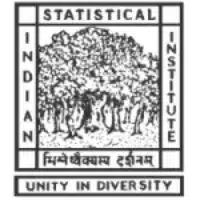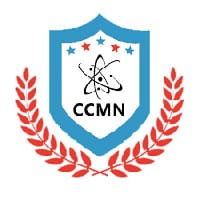Latest Applications Open 2024:
The Indian Statistical Institute (ISI) was developed by Professor Prasanta Chandra Mahalanobis in 1931. It is the worldwide level of the Institute, which is highly growing in our country for candidates to provide them with various courses.
The Indian Statistical Institute (ISI) provides various undergraduate and postgraduate courses for candidates which include statistics, science, technology, etc. There is the best opportunity is provided for candidates to get admission to the Indian Statistical Institute.
On the various campuses, the Indian Statistical Institute is situated for the candidates, and those campuses are Chennai, Tezpur, Delhi, and Bangalore. Through this article, candidates will get complete information on the Indian Statistical Institute Test Syllabus.
Indian Statistical Institute Test Syllabus Courses
- B.Stat.
- B.Math.
- B.S.(QE)
- B.S.(LIS)
- B.S.(QMS)
- B.Tech. (CS)
- B.Tech. (QROR)
- JRF in Statistics
- JRF in Mathematics
- JRF in Quantitative Economics
- JRF in Computer Science
- JRF in Quality, Reliability and Operations Research
- JRF in Physics
- JRF in Library and Information Science
- JRF in Sociology
- JRF in Geology
- JRF in Psychology
- JRF in Agricultural Chemistry and Soil Science
- JRF in Linguistics
- PG Diploma in Statistical Methods and Analytics
- PG Diploma in Computer Applications
Stat. Algebra
- Sets
- Operations on sets
- Prime numbers
- Factorization of integers and divisibility
- Rational and irrational numbers
- Permutations and combinations
- Basic probability
- Binomial Theorem
- Logarithms
- Polynomials
- Remainder Theorem
- Theory of quadratic equations and expressions
- Relations between roots and coefficients
- Arithmetic and geometric progressions
- Inequalities involving arithmetic
- Geometric & harmonic means
- Complex numbers
- Matrices and determinants
Geometry
- Plane geometry
- The geometry of 2 dimensions with Cartesian and polar coordinates
- The equation of a line
- The angle between two lines
- Distance from a point to a line
- The concept of a Locus
- Area of a triangle
- Equations of circle
- Parabola
- Ellipse and hyperbola and equations of their tangents and normal
- Mensuration
Trigonometry
- Measures of angles
- Trigonometric and inverse trigonometric functions
- Trigonometric identities including addition formulae
- Solutions of trigonometric equations
- Properties of triangles
- Heights and distances
Calculus
- Sequences
- Bounded sequences
- Monotone sequences
- Limit of a sequence
- Functions
- One-one functions
- Onto functions
- Limits and continuity
- Derivatives and methods of differentiation
- The slope of a curve
- Tangents and normal
- Maxima and minima
- Using calculus to sketch graphs of functions
- Methods of integration
- Definite and indefinite integrals
- Evaluation of area using integrals
M.S. (QE)
Syllabus for PEA (Mathematics)
Algebra
- Binomial Theorem
- AP
- GP
- Series
- Permutations and Combinations
- Theory of Polynomial Equations
Linear Algebra
- Vector spaces
- Linear transformations
- Matrix representations and elementary operations
- Systems of linear equations
Calculus
- Functions
- Limits
- Continuity
- Differentiation of functions of one or more variables
- Unconstrained Optimization
- Definite and Indefinite Integrals
- Integration by parts and integration by substitution
- Convexity and quasi-convexity
- Constrained optimization of functions of not more than two variables
- The implicit function theorem
- Homogeneous and homothetic functions.
Elementary Statistics
- Elementary probability theory
- Measures of central tendency
- Dispersion
- Correlation and regression
- Probability distributions
- Standard distributions-Binomial and Normal.
Syllabus for PEB (Economics)
Microeconomics
- Theory of consumer behavior
- Theory of production
- The market structure under perfect competition
- Monopoly
- Price discrimination
- Duopoly with Cournot and Bertrand competition
- Public goods
- Externalities
- General equilibrium
- Welfare economics
Macroeconomics
- National income accounting
- Simple Keynesian Model of income determination and the multiplier
- IS-LM Model
- Models of aggregate demand and aggregate supply
- Money
- Banking and inflation
- Phillips Curve
- Elementary open-economy macroeconomics
- Harrod-Domar
- Solow
- Optimal growth models.
M.S. (LIS)
The Paper I (Forenoon): Test Code: PLA
There will be 30 objective-type questions. These are given to test quantitative skills (at 10 +2 level) and reasoning skills (at the undergraduate level) Knowledge of mathematics, Ability to read and understand graphs & statistical tables (preferably 10+2 level)
PLA test consists of two parts: Part I: Test of Quantitative Ability and Part II: Test of Reasoning Ability. The candidates are expected to answer all 30 questions.
Latest Applications For Various UG & PG Courses Open 2024
-
- Parul University | Admissions Open for All Courses 2024. Apply Now
- Chandigarh University | Admissions Open for All Courses 2024. Apply Now
- NIIT | Admissions Open for All Courses 2024. Apply Now
- KL University | Admissions Open for All Courses 2024. Apply Now
- Alliance UG | Admissions Open for All Courses 2024. Apply Now
- GD Goenka | Admissions Open for All Courses 2024. Apply Now
Paper-II (Afternoon): Test Code: PLB
There will be 30 objective-type questions. This paper will mostly test language proficiency and aptitude. The broad pattern of the question paper will be as below:
Part A
- Comprehension Ability Test. The candidate is expected to go through the text and understand its content, to answer the objective-type questions.
- Test of English Language Proficiency. Questions are given to test the knowledge of antonyms, analogy, synonyms, and elementary English grammar.
Part B
- Test of knowledge of Books, Libraries, Information, and Computers. Basic general knowledge of books, libraries, Information Technology, etc.
M.S. (QMS
Algebra
Binomial Theorem, AP, GP, HP, Exponential and Logarithmic Series, Sequence, Permutations and Combinations, Theory of Equations.
Matrix Algebra
Vectors and Matrices, Matrix Operations, Determinants
Latest Applications For Various UG & PG Courses Open 2024
-
- Parul University | Admissions Open for All Courses 2024. Apply Now
- Chandigarh University | Admissions Open for All Courses 2024. Apply Now
- NIIT | Admissions Open for All Courses 2024. Apply Now
- KL University | Admissions Open for All Courses 2024. Apply Now
- Alliance UG | Admissions Open for All Courses 2024. Apply Now
- GD Goenka | Admissions Open for All Courses 2024. Apply Now
Calculus
Functions, Limits, Continuity, Differentiation of functions of one or more variables Unconstrained Optimization, Definite and Indefinite Integrals: Integration by parts, and integration by substitution. Elements of Probability and Probability Distributions
M.Tech.(QROR)
PART I: Statistics/ Mathematics Stream
Statistics (S1)
- Descriptive statistics for univariate, bivariate, and multivariate data.
- Standard univariate probability distributions [Binomial, Poisson, Normal] and their fittings, properties of distributions. Sampling distributions.
- Theory of estimation and tests of statistical hypotheses.
- Simple and Multiple linear regression, linear statistical models, ANOVA.
- Principles of experimental designs and basic designs [CRD, RBD & LSD], Full factorial design, Confounding and blocking in 2k factorial designs
- Elements of nonparametric inference.
- Elements of the categorical data analysis.
- Sample surveys – simple random sampling with and without replacement, stratified, and cluster sampling.
Probability (S2)
- The classical definition of probability and standard results on operations with events, conditional probability, and independence.
- Distributions of discrete type [Bernoulli, Binomial, Multinomial, Hypergeometric, Poisson, Geometric and Negative Binomial] and continuous type [Uniform, Exponential, Normal, Gamma, Beta] random variables and their moments.
- Bivariate distributions (with special emphasis on bivariate normal), marginal and conditional distributions, correlation and regression.
- Multivariate distributions, marginal and conditional distributions, regression, independence, partial and multiple correlations.
- Order statistics [including distributions of extreme values and of sample range for uniform and exponential distributions].
- Distributions of functions of random variables.
- Multivariate normal distribution [density, marginal and conditional distributions, regression].
- Weak law of large numbers, central limit theorem.
- Basics of Markov chains and Poisson processes. PART II: ENGINEERING STREAM Mathematics (E1)
- Quadratic equations, Roots of polynomial, AP, GP, HP, Divisibility and Prime numbers, Binomial theorem
- Inequalities, permutation and combination, complex numbers, and De Moivre’s theorem.
- Elementary set theory, functions, and relations, matrices, determinants, solutions of linear equations.
- Trigonometry [multiple and sub-multiple angles, inverse circular functions, identities, solutions of equations, properties of triangles].
- Coordinate geometry (two dimensions) [straight line, circle, parabola, ellipse, and hyperbola], plane geometry, Mensuration.
- Sequences, series, and their convergence and divergence, power series, limit and continuity of functions of one or more variables, differentiation, and its applications, maxima and minima, integration, definite integrals areas using integrals, ordinary and partial differential equations (up to second order) Engineering and Technology (E2) Engineering Mechanics and Thermodynamics
- Forces in plane and space, analysis of trusses, beams, columns, friction, principles of strength of materials, work-energy principle, a moment of inertia, the plane motion of rigid bodies, belt drives, and gearing.
- Laws of thermodynamics, internal energy, work and heat changes, reversible changes, adiabatic changes, the heat of formation, combustion, reaction, solution and dilution, entropy, and free energy and maximum work function, reversible cycle and its efficiency, principles of internal combustion engines. Principles of refrigeration. Electrical and Electronics Engineering
- DC circuits, AC circuits (1-φ), energy and power relationships, Transformer, DC and AC machines, concepts of control theory, and applications.
- Network analysis, 2 port network, transmission lines, Elementary electronics (including amplifiers, oscillators, and op-amp circuits), analogue and digital electronic circuits. Engineering Drawing
- The concept of projection, point projection, line projection, plan, elevation, sectional view (1st angle / 3rd angle) of simple mechanical objects, isometric view, dimensioning, and A sketch of machine parts. (Use of Set Square, compass, and diagonal scale should suffice).
If you have any queries regarding ISI Syllabus 2025, you can ask your query and leave comments below.

As a dedicated Biology Science graduate, I’m passionate about sharing the latest updates in national and state entrance exams through my blog. I aim to keep aspiring students informed about exam trends, important dates, and changes in syllabi. With a keen interest in education, I strive to offer valuable insights for students navigating the competitive landscape of entrance examinations and admission tests. Stay updated with me.

